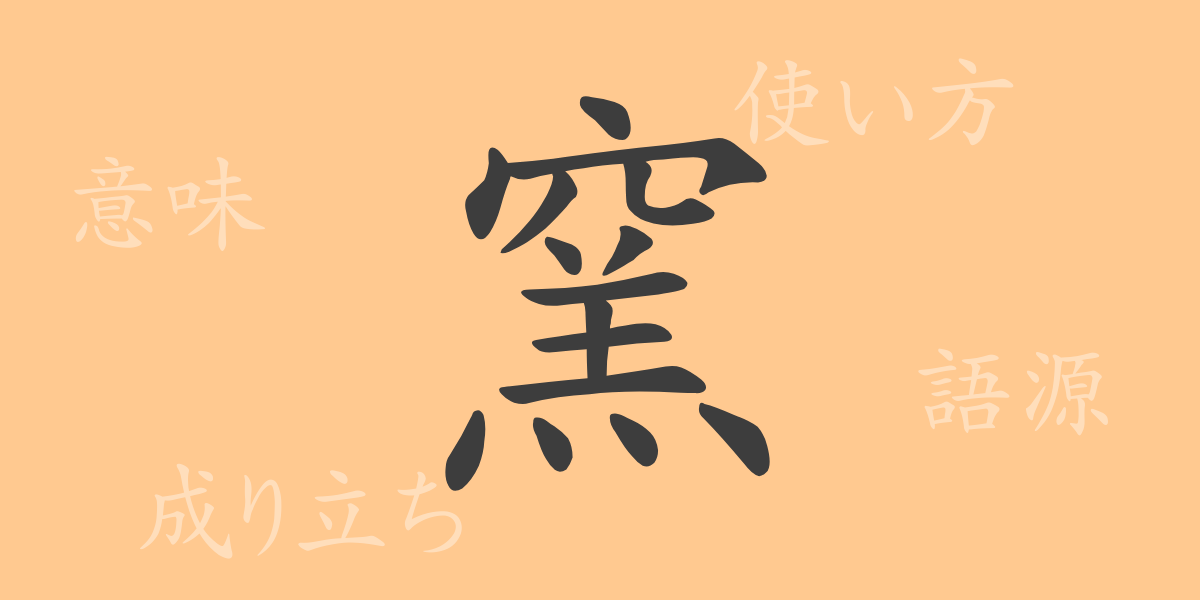From the moment humanity learned to control fire, the kiln has been an indispensable part of our lives. Let’s delve into the history and meaning behind this single character and explore the world of the commonly used Japanese kanji “窯” (kama).
The Origin of 窯 (kama)
The origin of 窯 (kama) is ancient, deriving from holes dug in the ground and hearths called 竈 (kamado). It is believed to originate from “窰” used in ancient China for pottery making, which was then introduced to Japan and established as “窯” (kama). This kanji has been used throughout history to refer to places or tools for processing materials using fire.
The Meaning and Usage of 窯 (kama)
窯 (kama) refers to facilities or equipment used for firing various items, such as pottery, ceramics, bricks, and cement. It is also metaphorically used to describe a place where human resources are nurtured.
Reading, Stroke Count, and Radical of 窯 (kama)
The kanji 窯 (kama) vividly reflects the atmosphere of a place where fire is handled, as indicated by its shape and sound.
- Reading: It is read as “ヨウ” (you) in the on’yomi reading and “かま” (kama) in the kun’yomi reading.
- Stroke Count: 窯 (kama) consists of a total of 13 strokes.
- Radical: The radical is 穴部 (anabu), which resembles a shape with soil underneath.
Idioms, Phrases, and Proverbs Using 窯 (kama) and Their Meanings
Idioms, phrases, and proverbs containing 窯 (kama) reflect its function and cultural background.
- 窯変 (youhen): The unexpected change in color or shape of pottery in the kiln. Broadly, it means unexpected changes.
- 窯出し (kamadashi): The act of removing pottery from the kiln. By extension, it refers to the release of new products into the market.
- 窯元 (kamamoto): A workshop or manufacturer of ceramics.
Summary of 窯 (kama)
窯 (kama) is not just a character but a concept deeply rooted in Japanese culture and industry. This single character embodies the infinite possibilities born from fire and earth, and the evolution of the technology that supports people’s lives. The regional cultures formed through the kiln industry and the traditional techniques passed down by kilns continue to color our lives even today.
“`

























